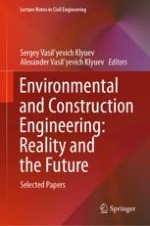This book gathers the latest advances, innovations, and applications in the field of construction engineering, as presented by researchers and engineers at the International Conference Environmental and Construction Engineering: Reality and the Future, held in Belgorod, Russia, on May 18-19, 2021. It covers highly diverse topics, including industrial and civil construction, building materials; environmental engineering and sustainability; machines, aggregates and processes in construction. The contributions, which were selected by means of a rigorous international peer-review process, highlight numerous exciting ideas that will spur novel research directions and foster multidisciplinary collaborations.
